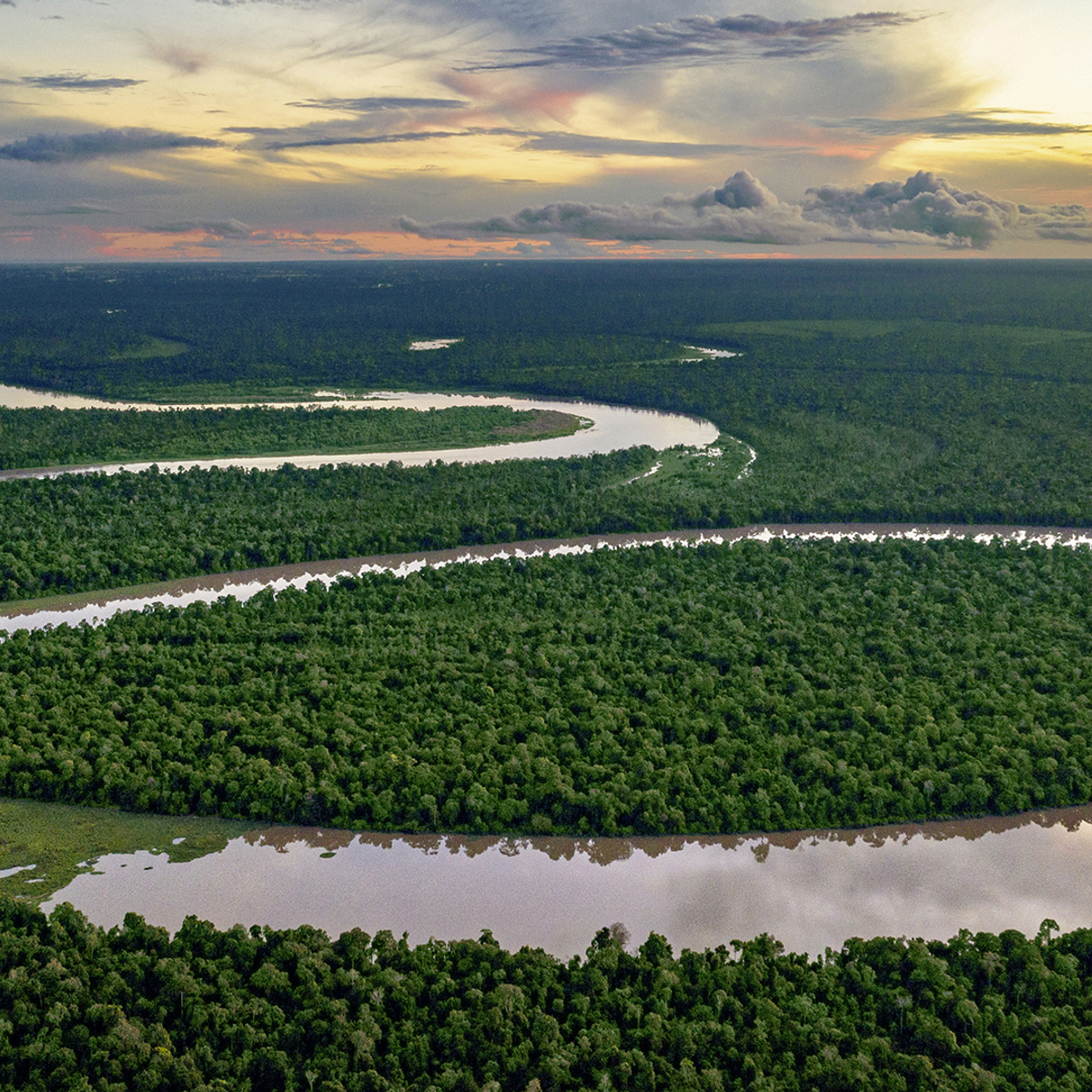50 years of climate talks. 50 years of climate talks. 50 years of climate talks. 50 years of climate talks. 50 years of climate talks
50 years of climate talks. 50 years of climate talks. 50 years of climate talks. 50 years of climate talks
50 years of climate talks
Timeline
1972 – Stockholm Conference Held every ten years, the United Nations Earth Summits are meetings of world leaders to discuss environmental issues and sustainable development. The first – the United Nations Conference on the Human Environment - took place in Stockholm, Sweden. It led to the formation of the United Nations Environment Programme (UNEP) and made the first ever mention of “global warming”.
1988 – Creation of the IPCC The Intergovernmental Panel on Climate Change (IPCC) is a body of the United Nations Environment Programme and the World Meteorological Organization (WMO). Its role is to scientifically monitor climate change. It brings together 130 countries, 2,500 thinkers, 130 government representatives and 800 authors. IPCC Working Group I assesses scientific aspects of climate change. Working Group II assesses the vulnerability of socioeconomic and natural systems to climate change. Working Group III studies options for the mitigation of the demographic, sociological and economic dimensions of climate change.
1990 – IPCC First Assessment Report The first IPCC report preceded the launch of negotiations leading to what would be the United Nations Framework Convention on Climate Change (UNFCCC), signed in Rio in 1992. The convention’s objective is to stabilise greenhouse gas concentrations "at a level that would prevent dangerous anthropogenic interference with the climate system." Industrialised countries committed to instating policies and measures that would bring greenhouse gas emissions to 1990 levels by the year 2000.
1992 – Rio Earth Summit The Rio Earth Summit in Brazil marked the beginning of a “global partnership” to combat climate change. The first international convention on climate change - the United Nations Framework Convention on Climate Change (UNFCCC) - was adopted there, entering into force in 1994. It acknowledged climate change, that human activity had increased greenhouse gases, and set as its objective the stabilisation of greenhouse gas concentrations at a level that would not endanger the climate system. It has since been ratified by 196 countries and the European Union. Signatories of the convention meet each year at a Conference of the Parties (COP).
1995 – COP 1 Berlin The first COP took place in 1995 in Berlin. For each country or region, it set quantified targets for greenhouse gas emission reductions, to be achieved through a series of political measures.
1996 – IPCC Second Assessment Report – COP 2 Geneva The second COP, in Geneva, followed shortly after publication of the second IPCC report, which focused on the role of anthropogenic greenhouse gas emissions in climate change. The report stated that climate change represents “a danger for humanity.”
1997 – COP 3 Kyoto The third COP in Kyoto produced the first binding protocol to reduce greenhouse gas emissions in over one hundred countries by 5.2% (relative to the 1990 base year) by 2020. For the Kyoto Protocol to come into effect, it had to be ratified by at least 55 countries. This was achieved in 2002 when Iceland committed to reducing its greenhouse gas emissions. The protocol was officially ratified in 2005 at the COP 11 in Montreal. The eight years between 1997 and 2005 were a period of intense negotiations and clarification as to how the protocol would be implemented: accounting rules, emissions markets, the clean development mechanism, an observation and governance system, etc. Disappointingly, the two countries with the most greenhouse gas emissions – the United States and China – failed to ratify the protocol. Similarly, Canada withdrew in 2011. In practice, sanctions for the non-respect of the Kyoto Protocol have never been clearly defined and the agreement is not legally binding.
2007 – IPCC Fourth Assessment Report – COP 13 Bali The fourth IPCC report concluded that the increase in global average warming recorded over the past 50 years was “very likely” due to increased greenhouse gas emissions from human activity. “Very likely” corresponds to a probability of 90% (versus 66% in 2001). Also that year, Al Gore and the IPCC were the joint recipients of the Nobel Peace Prize. Part of the Bali Road Map , the Bali Action Plan charted the course for negotiations towards a global climate change agreement, to be completed by end 2009, that would fill the gap when the first commitment period under the Kyoto Protocol ended in in 2012. Parties agreed on the five subjects to be covered during negotiations: a shared vision for action on climate change through which the UNFCCC’s ultimate objective could be achieved; modalities to mitigate emissions in developed and developing countries; adaptation, technology and financing.
2009 – COP 15 Copenhagen The Copenhagen Accord was unprecedented in setting out action to combat climate change globally, especially emissions cuts and financing to help developing countries over the coming decade. The text has delivered results never previously achieved in ten areas. One of its main points is to have set a target to keep the increase in global temperature below 2 degrees Celsius by the end of the century. It also agreed that developed countries would raise $30 billion from 2010 to 2012 and a goal to raise $100 billion in public and private funding per year by 2020 to help developing countries cut their carbon emissions.
2012 – Rio Earth Summit Twenty years after the first Rio Earth Summit, “Rio +20” launched the process to adopt the Sustainable Development Goals (SDGs) which succeeded the Millennium Development Goals, which expired at end 2015.
2015 – COP 21 Paris On December 12, 2015, the United Nations Climate Change Conference (COP 21) in Paris, France, concluded with the adoption of the Paris Agreement by the 195 participating nations. This was the first time an agreement had been unanimously adopted. An additional protocol to the United Nations Framework Convention on Climate Change, it succeeded the Kyoto Protocol as from 2020. The Paris Agreement set an ambitious target to limit global warming at “well below 2 degrees Celsius” compared to pre-industrial levels and ideally 1.5 degrees Celsius. All signatories submitted pledges (“Nationally Determined Contributions” NDCs) to limit their greenhouse gas emissions.
2021 – COP 26 Glasgow Held in Glasgow, Scotland, COP26 saw a scaling-up of commitments to mitigate climate change. The participating nations finalised the Paris Agreement rulebook, including how countries would be held accountable for delivering their NDC targets and rules on global carbon trading. A number of sectorial commitments were also agreed: a reduction in methane emissions; the phasing-out of public financing of fossil fuel projects abroad; a pledge to halt and reverse forest loss; delivery of clean technology and infrastructure; a reduction in emissions from international shipping and the creation of green shipping corridors. Under the Glasgow Climate Pact, objectives would be reviewed annually and countries were asked to “phase down” their use of coal. Developed countries agreed to double their climate financing from 2019 levels by 2025.
2021-2022 – IPCC Sixth Assessment Report Writing of the sixth IPCC report began in 2017-2018. It compiles the most recent and comprehensive scientific findings on the climate system and climate change. As with previous reports, it sets out contributions by the three Working Groups:
- Climate Change 2021: The Physical Science Basis (August 2021)
- Climate Change 2022: Impacts, Adaptation and Vulnerability (February 2022)
- Climate Change 2022: Mitigation of Climate Change (March 2022)
- Synthesis Report (September 2022)
In order to achieve the target to limit global warming to +1.5 degrees Celsius compared with pre-industrial levels, the report states that greenhouse gas emissions must begin to fall at the latest by 2025.
2022 – UN Biodiversity Conference COP 15 Alongside climate negotiations, under the 1992 United Nations Convention on Biological Diversity, a Conference of the Parties is held every two years specifically on biodiversity. After two years of virtual meetings, the 196 nations that are party to the convention met in Geneva at end March 2022 to prepare for COP 15, which will take place in Kunming, China, at end August 2022. Stakes are high, as the conference aims to adopt a new global framework to halt and reverse biodiversity loss with long-term goals for the middle of the century and shorter-term targets for 2030. According to the UN Global Biodiversity Outlook 5 report, not one of the 20 Aichi biodiversity targets for 2020 was achieved at global level. Outcomes from the Geneva discussions suggest that an agreement is still a long way off.
Definitions
Conference of the Parties (COP) The supreme decision-making body of the United Nations Framework Convention on Climate Change (UNFCCC), officialised at the 1992 Rio Earth Summit and meeting each year since 1995. Parties are representatives of the nations that signed the UNFCCC and representatives of civil society, including non-governmental organisations, intergovernmental organisations and business leaders. A key task of the COP is to review measures taken to reduce greenhouse gases and to negotiate new commitments.
Earth Summit A meeting, held every ten years as part of the United Nations Framework Convention on Climate Change (UNFCCC), to define measures to achieve sustainable development.
Intergovernmental Panel on Climate Change (IPCC) The Intergovernmental Panel on Climate Change (IPCC) was set up in 1988 to provide comprehensive assessments of the state of scientific, technical and socio-economic knowledge on climate change, its causes, potential impacts and response strategies. Its role is not to carry out new research but to establish the current state of knowledge through critical assessment of the latest scientific findings. These assessments are made available to governments as a basis for climate-change policy. They also serve as a guideline for COP negotiations. The IPCC comprises three Working Groups:
- Working Group I assesses the physical scientific basis of the climate system and climate change. It drafts possible scenarios based on different levels of human-induced greenhouse gas emissions.
- Working Group II assesses the vulnerability of socio-economic and natural systems to climate change, the consequences of climate change and options for adapting to it.
- Working Group III focuses on climate change mitigation, assessing methods for reducing greenhouse gas emissions and removing greenhouse gases from the atmosphere.
Fundamental notions
Global warming
Global warming is the rapid increase in average temperature observed since the 1850s as a result of human activity. 2011-2020 was the warmest decade on record with an average global temperature that was 1.1 degree Celsius higher than the pre-industrial (1850-1900) average. Climate historians state that temperatures have never increased so much in such a short period. On a geological timescale, the average difference in temperature between a glacial period and the warmer interglacial period is just 4 degrees Celsius.
Greenhouse effect
The Earth receives 340 watts/m2 of energy from the Sun at the top of the atmosphere. Around 30% is reflected back into space by clouds and by the polar ice caps, sea ice and glaciers. Without an atmosphere, the remainder would be absorbed by the surface of the planet and re-emitted as infrared rays into space. However, Earth does have an atmosphere whose gases produce a natural “greenhouse effect”. Some of these gases (which include water vapour, carbon dioxide and methane) absorb infrared rays and redirect them in all directions, including to Earth’s surface. The action of these so-called “greenhouse gases” maintains an average temperature on Earth of +15 degrees Celsius. Without them it would be -18 degrees Celsius. Greenhouse gases therefore maintain a temperature that allows life to develop on Earth.
The consequences of global warming (an example)
According to the most recent part of the IPPC’s sixth assessment report, published in March 2022, humans are the species most under threat from global warming. Between 3.3 and 3.6 billion people “live in contexts that are highly vulnerable to climate change.” Thermal expansion due to increased ocean temperature combined with accelerated ice melt leads to a rise in sea levels that is of particular concern to densely populated islands and deltas such as Bangladesh.
What are the principal man-made greenhouse gases?
There are three main ones - carbon dioxide (CO₂), methane (CH₄) and nitrous oxide (N₂O) – plus the fluorinated gases. Total emissions resulting from human activity in 2019 were the equivalent of 59.1 billion tonnes (59.1 gigatonnes) of CO₂.
Who produces the most CO₂?
- Per country China has been the biggest emitter since the early 2000s, generating 30.3% of global CO₂ emissions in 2019. Next are the United States (13.4%), the European Union (7.7%) and India (6.8%). Between 1990 and 2019, China and India contributed most to the global increase in emissions (+68%). If, however, we take 1850 as our starting-point, the United States and Europe carry most responsibility with 25% and 22% of emissions respectively. China contributed 11% over this period, with a spectacular increase in just two decades.
- Per sector If we only take into account carbon dioxide from fuel combustion, electricity production is the biggest emitter (40%). Over the past decade, global demand for electricity rose by 25%. However, corresponding CO₂ emissions increased by just 9% thanks to wind and solar. Coal combustion is responsible for three quarters of the CO₂ emitted in electricity production. This is especially true in China. In the United States, the amount of coal burned to generate electricity is decreasing, replaced by natural gas.
- By wealth If we calculate an individual’s carbon footprint as the CO₂ produced by their respective countries but also emissions relating to consumption of imported goods and services, the world’s richest produce more carbon than less wealthy citizens. According to Oxfam, the world’s richest 10% (around 630 million people) were responsible for 52% of carbon emissions between 1990 and 2015. That is double the amount produced by the world’s poorest 50% (around 3.1 billion people). Figures put forward by the Paris School of Economics are very similar: in 2019 the world’s richest 10% produced almost 48% of global emissions (17% for the richest 1%), whereas the poorest half of the world population contributed just 12%.
Science and global warming
In order to establish with certainty that Earth’s atmosphere is warming, scientists have precisely measured dozens of indicators such as the gases in Antarctica’s ice, the types of pollen in peat bogs or the density of foraminiferal shells (foraminifera are single-cell organisms at the bottom of the ocean). Through these painstaking measures and analyses, they have predicted the average temperature of the atmosphere going back 800,000 years. Conclusions also make use of climate models, which are mathematical representations of Earth’s climate system. The most sophisticated comprise tens of thousands of lines of computer code which are processed by super-calculators, capable of reproducing the subtle interactions and retroactions between the atmosphere, the ocean, vegetation, etc. Without them, climatologists wouldn’t be able to test their hypotheses, in particular regarding past temperatures. However, models cannot reproduce temperature changes recorded since 1850 based only on natural factors (such as changing solar intensity or volcanic eruptions). Only by integrating man-made greenhouse gas emissions can computers establish a correspondence with measured data.



